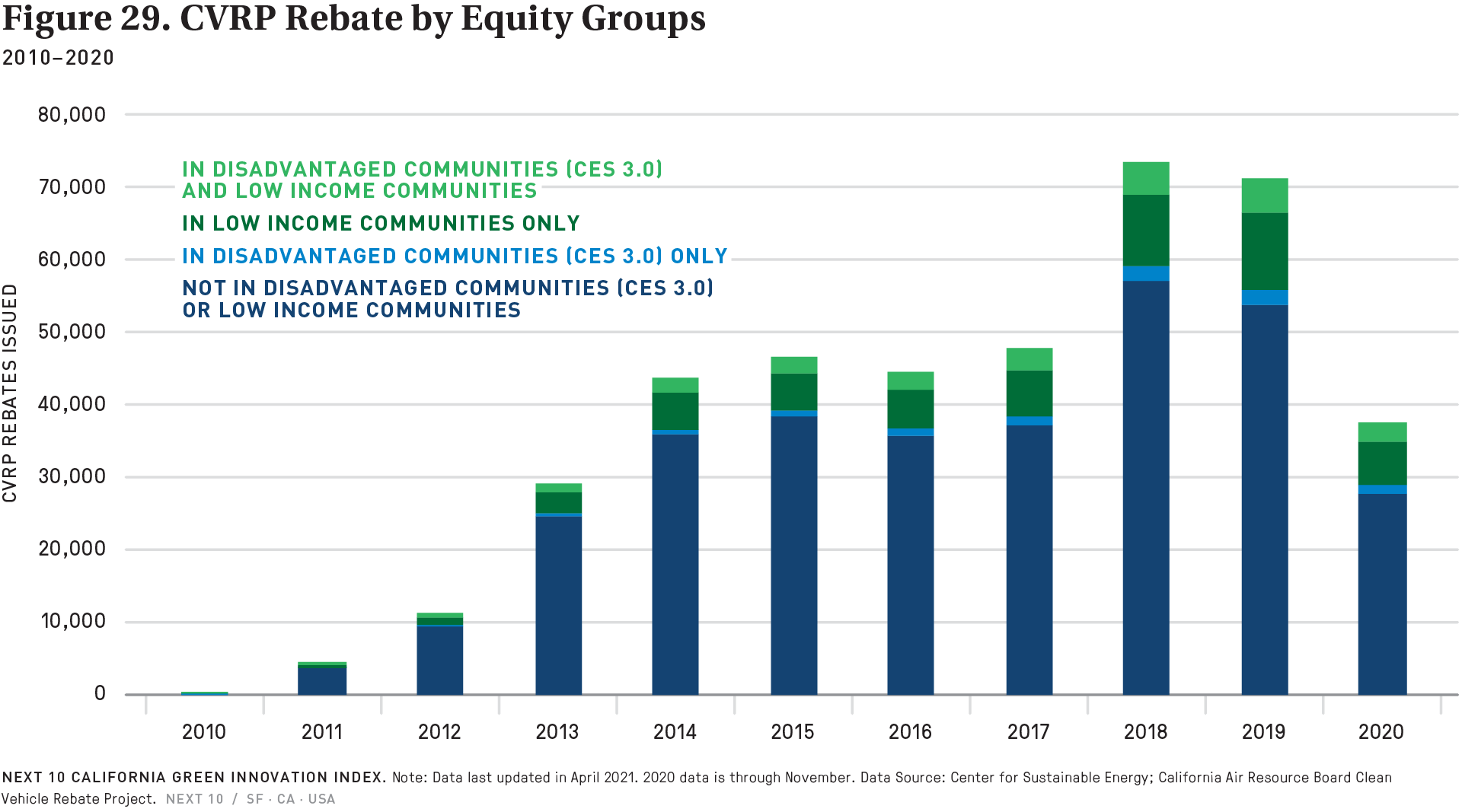Highlight
- Although the number of clean vehicle rebates claimed was down considerably in 2020 (data is through November) due to lower sales and more stringent vehicle eligibility,67 the share of people living in disadvantaged communities (as defined by CalEnviroScreen 3.0) and low-income communities (as defined by Assembly Bill 1550) who have taken advantage of the rebate has been steadily increasing68 the last few years. In 2020, 26.3 percent of rebates came from either of these groups, up from 24.5 percent in 2019 and almost ten percentage points in 2015 (17.8%).
67 For example, Toyota Prius Prime, which was the best-selling PHEV in 2018 and 2019, is no longer eligible due to the increased minimum 30-mile EPA electric range requirement implemented on April 6, 2021. This vehicle has a rated 25-mile EPA electric range.
68 California Budget & Policy Center “Income Inequality Significantly Increased for Californians in 2018.
Retrieved From https://calbudgetcenter.org/resources/income-inequality-significantly-increased-for-californians-in-2018/
Opportunity
- With Executive Order N-79-20, which calls for the elimination of new internal combustion passenger vehicles by 2035, signed, providing access to equitable clean transportation will only become more important. It is not possible for California to achieve its goal of 100 percent ZEVs without proactively creating policies that make clean transportation options truly accessible and practical for disadvantaged, low-income and other priority communities.69
69 The recent study (April 2021) by UCLA Luskin Center for Innovation, An Agenda or Equity-Centered Clean Transportation, outlines a roadmap, performance metrics and policy reform recommendations that would facilitate, encourage and achieve equitable clean transportation in California. The study can be accessed here: https://innovation.luskin.ucla.edu/wp-content/uploads/2021/04/An-Agenda-for-Equity-Centered-Clean-Transportation.pdf
